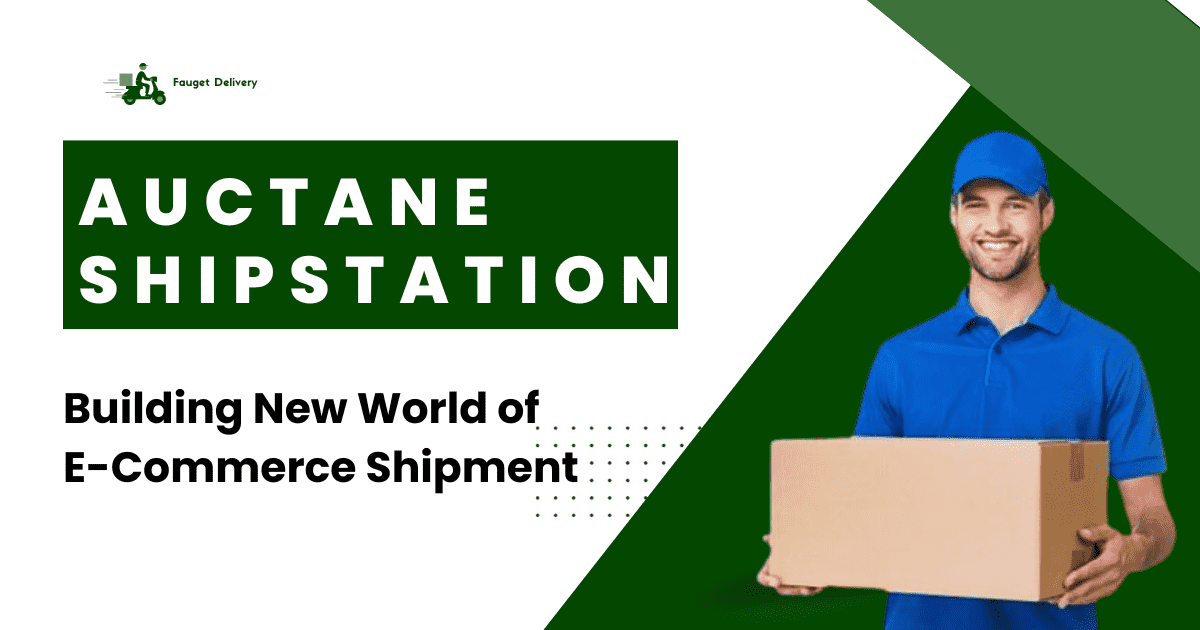Introduction to Auctane ShipStation
Auctane ShipStation is a comprehensive shipping software solution designed to streamline and simplify the shipping process for businesses. Whether you’re running a small online store or managing a large e-commerce operation, ShipStation helps automate and optimize shipping tasks, saving time and reducing errors. It integrates with various selling channels, haulers, and fulfillment services, making it a versatile tool for businesses of all sizes.
Key Features of ShipStation
Multi-Channel Integration
One of the standout features of Auctane ShipStation is its ability to integrate with multiple selling channels. Whether you sell on Amazon, eBay, Shopify, Etsy, or your own website, ShipStation can connect to these platforms, consolidating all your orders into one interface. This integration allows for easier management of orders and helps avoid the hassle of switching between different systems.
hauler Integration
Auctane ShipStation works with a wide range of shipping haulers, including USPS, UPS, FedEx, DHL, and many others. This variety gives businesses the flexibility to choose the best hauler for their needs, whether it’s for cost, speed, or reliability. Additionally, ShipStation provides access to discounted shipping rates, helping businesses save money on their shipping costs.
Automation Rules
To further streamline the shipping process, ShipStation offers automation rules. These rules can be set up to automatically apply specific shipping methods, package types, or hauler services based on order criteria such as weight, destination, or item type. Automation reduces manual intervention, ensuring consistency and efficiency in order processing.
Customizable Branding
Auctane ShipStation allows businesses to customize shipping tags, packing slips, and tracking emails with their branding. This feature ensures a consistent brand experience for customers from the moment they place an order to when they receive their package. Customizable branding helps build customer loyalty and reinforces brand identity.
Inventory Management
Keeping track of inventory is crucial for any business. Auctane ShipStation offers inventory management features that sync with your selling channels, helping you track stock levels and avoid overselling. This integration helps maintain accurate inventory records and ensures that you can fulfill orders promptly.
Reporting and Analytics
Auctane ShipStation provides robust reporting and analytics tools to help businesses gain insights into their shipping operations. Users can generate reports on shipping costs, delivery times, hauler performance, and more. These insights help identify areas for improvement and optimize shipping strategies for better efficiency and cost-effectiveness.
Benefits of Using ShipStation
Time Savings
By automating many aspects of the Auctane ShipStation process, ShipStation saves businesses significant time. The software handles tasks such as importing orders, printing tags, and sending tracking information, allowing business owners and staff to focus on other important aspects of their operations.
Cost Efficiency
Auctane ShipStation integration with multiple haulers and access to discounted rates help businesses reduce shipping costs. Additionally, the ability to compare rates from different haulers ensures that businesses can choose the most cost-effective shipping options for their needs.
Improved Accuracy
Automation rules and integration with selling channels help minimize human errors in the shipping process. This accuracy reduces the risk of shipping mistakes, such as incorrect addresses or wrong shipping methods, leading to higher customer satisfaction.
Enhanced Customer Experience
Providing customers with timely and accurate shipping information is crucial for a positive shopping experience. ShipStation’s automated tracking emails and customizable packing slips keep customers informed about their orders, leading to increased trust and satisfaction.
Scalability
As businesses grow, their shipping needs become more complex. ShipStation is designed to scale with your business, accommodating increased order volumes and new selling channels. Its robust features and integrations make it a reliable solution for businesses at any stage of growth.
How ShipStation Works
Step 1: Connecting Selling Channels
The first step in using ShipStation is connecting your selling channels. This process involves linking your e-commerce platforms, such as Shopify, Amazon, or eBay, to ShipStation. Once connected, all
your orders will automatically be imported into ShipStation, allowing you to manage them from a single dashboard.
Step 2: Setting Up Shipping Carriers
Next, you’ll set up your shipping haulers. ShipStation supports a variety of haulers, including USPS, UPS, FedEx, and more. You can connect your existing hauler accounts to ShipStation or take advantage of the discounted rates offered through ShipStation’s partnerships with these haulers. This setup ensures that you have access to the best shipping options for your business.
Step 3: Configuring Automation Rules
To maximize efficiency, you’ll want to configure automation rules. These rules allow you to set criteria for automatically applying shipping methods, package types, or haulers to your orders. For example, you can create a rule that automatically assigns expedited shipping to orders over a certain value or that weigh less than a specified amount. Automation rules help streamline your workflow and reduce manual processing.
Step 4: Managing Orders
Once your channels and haulers are set up, you can start managing your orders. ShipStation’s user-friendly interface displays all your orders in one place, making it easy to view and process them. You can filter orders by status, date, or other criteria to find the information you need quickly.
Step 5: Printing Labels and Packing Slips
When you’re ready to ship, ShipStation makes it simple to print shipping tags and packing slips. You can print tags individually or in batches, saving time when processing multiple orders. The customizable packing slips ensure that your branding is consistent throughout the customer experience.
Step 6: Sending Tracking Information
After printing tags and packing orders, ShipStation automatically sends tracking information to your customers. This feature keeps customers informed about the status of their shipments and reduces the number of inquiries about order tracking. Customers appreciate receiving timely updates, which enhances their overall shopping experience.
Step 7: Analyzing Shipping Data
ShipStation’s reporting and analytics tools provide valuable insights into your shipping operations. You can generate reports on shipping costs, delivery times, hauler performance, and more. These insights help you identify trends, spot potential issues, and optimize your shipping strategy for better efficiency and cost savings.
Real-World Applications
Small Businesses
For small businesses, managing shipping can be a daunting task. ShipStation simplifies the process by consolidating orders from various channels and automating many shipping tasks. This ease of use allows small business owners to focus on growing their business instead of getting bogged down by shipping logistics.
Medium-Sized Enterprises
Medium-sized enterprises often face more complex shipping needs due to higher order volumes and a broader range of products. Ship Station’s robust features and scalability make it an ideal solution for these businesses. The software’s ability to handle multiple haulers and automation rules ensures that orders are processed quickly and accurately, even during peak seasons.
Large E-Commerce Operations
Large e-commerce operations require a powerful shipping solution that can handle high volumes and integrate with numerous selling channels. ShipStation’s advanced features, such as bulk label printing and detailed analytics, provide the necessary tools to manage large-scale shipping efficiently. The software’s scalability ensures that it can grow with the business, accommodating increasing order volumes and expanding sales channels.



















